The basic National Motor Lifeboat School (NMLBS) headquartered at Cape Disappointment on the Columbia River in Washington, sometimes in collaboration with the Advanced Helicopter Rescue School, is a grueling four-week program to earn the coveted Surfman badge in the US Coast Guard. Training is provided in four possible ascending stages:
47′ MLB Introduction
47′ MLB Heavy Weather Coxswain
47′ MLB Surfman
47′ MLB Operations Supervisor
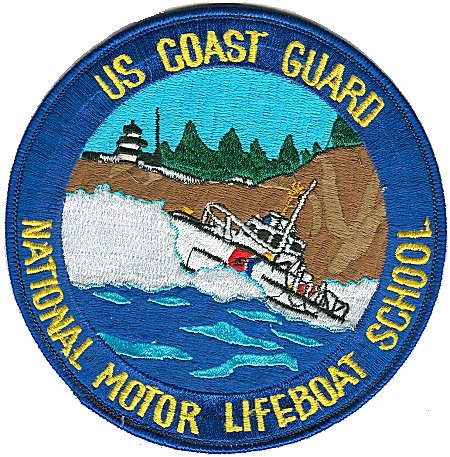
“Metal clinked on metal as three small groups of US Coast Guard students and their instructors clipped canvas waist belts to both sides of their 47-foot rescue boats, vital lifelines for staying onboard when the big waves come.
And on these waters, they always come.”
SURFMAN’S CREED
I will to the best of my ability, pursue each
mission with the commitment, compassion,
and courage inherent in the title
“SURFMAN.”
I will endeavor to reinforce the worldwide
reputation of our forefathers in the
Lifeboat Community.
I will maintain a guardian’s eye on my crew
at all times, and keep a cool, yet
deliberate, hand on the throttle.
I will give of myself and my knowledge as
those who gave to me; so as the line
of Coast Guard Surfman will live forever.
I will ensure that my supervisors rest easy
with the knowledge that I am at the
helm, no matter what the conditions.
I will never unnecessarily jeopardize myself,
my boat, or my crew; but will do so freely
to rescue those in peril.
I will strive with dedication and determination
to bring credit upon Coast Guard Surfmen
past and future.
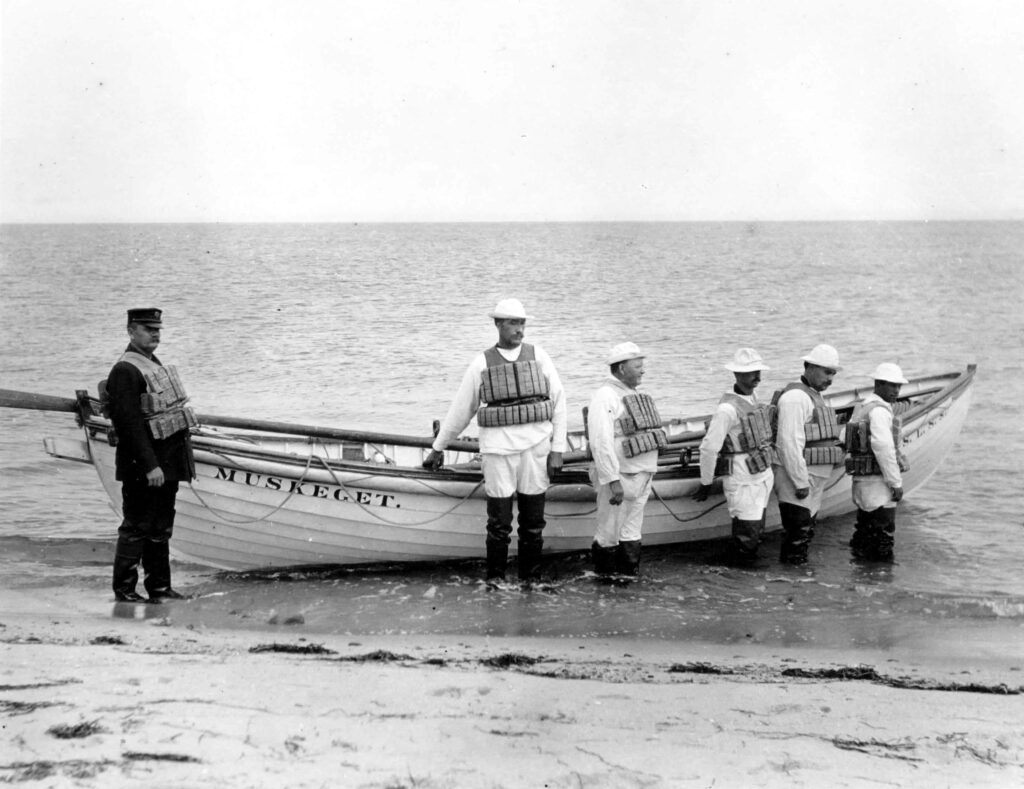
Remembering the Sacrifice: the Loss of USCG Surfmen
Among their countless lifesaving triumphs and tragedies, the loss of USCG Surfmen on 12 Jan 1961 exemplifies the risk those crews take each time they set forth on a rescue attempt. In summary, the fishing vessel MERMAID, a 34-foot crab-fishing boat from Ilwaco, WA, lost its rudder near treacherous Peacock Spit. The strong ocean current and relentless southerly winds were drifting her into waves breaking over the shallow spit, and without steerage, the vessel was helpless and doomed to capsize. The Cape Disappointment Lifeboat Station immediately dispatched two search and rescue vessels: a 40-foot utility boat and a smaller, slower 36-foot motor lifeboat. It took a while, but the utility boat crew eventually located the Mermaid and took it into tow. Neither Coast Guard rescue boat had enough horsepower to haul the rudderless Mermaid through the line of heavy rollers over the bar and into the river’s estuary. In addition, the 40-foot utility boat was designed for operations in protected waters, not extreme surf conditions. Due to the extremely hazardous sea conditions, the coxswain of the utility boat, Darrell Murray, radioed Oregon’s Point Adams Lifeboat Station for assistance. The Coast Guard motor lifeboat TRIUMPH, a powerful 52-footer, rendezvoused with Murray’s utility boat at approximately 7:00 p.m. and took up the tow. Aboard the TRIUMPH, Boatswain’s Mate First Class John Culp and his five-man crew were having severe difficulties. At 7:30 p.m., shortly after taking the Mermaid in tow, the four-inch towing hawser parted. The crew passed another towline to the fishing vessel, but after 15 minutes, that line also parted.
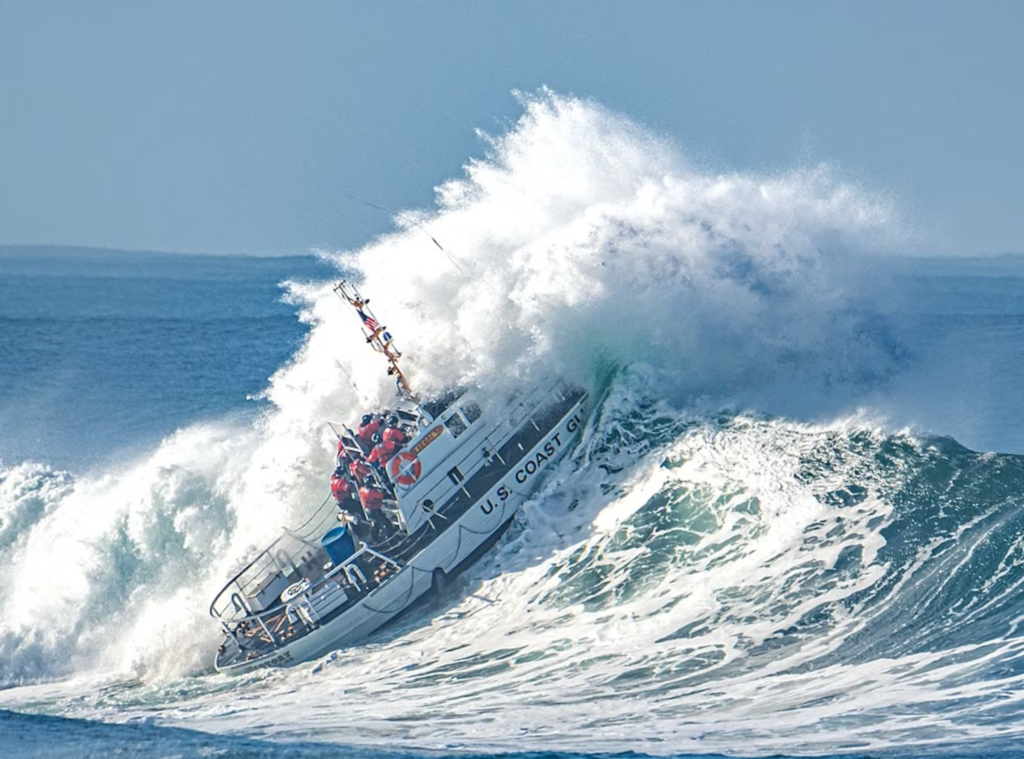
Local Coast Guard stations received a distress call from the MERMAID advising that the TRIUMPH had capsized and the fishing vessel was drifting into the line of mountainous breakers on Peacock Spit. Built of wood in 1935, the TRIUMPH was not a self-bailing/self-righting design and had disappeared in the heavy surf. The other 36-foot motor lifeboat and the outbound freighter SS Diaz de Solis scanned the area with searchlights for 15 minutes, but the MERMAID had vanished in the heavy surf. Soon thereafter, the cutter YOCONA arrived on the scene and, together with the two 36-foot lifeboats from Point Adams, continued to search for survivors. A Coast Guard UF-2G Albatross was dispatched. With its afterdeck nearly awash, the motor lifeboat was moored to the lightship’s stern. However, on Friday at 5:45 a.m., the deck watch reported that the 36-foot motor lifeboat had foundered and disappeared beneath the waves. The Coast Guard’s search for missing crewmembers continued for days.
Lost at Sea:
Stanley Bergman, age 26, fishing vessel Mermaid
Boatswain’s Mate Second Class John S. Hoban, age 27, Triumph
Seaman Ralph E. Mace, age 19, Triumph
Engineman Third Class Joseph E. Petrin, age 21, Triumph
Seaman Gordon F. Sussex, age 21, Triumph
Remains Recovered:
Bert E. Bergman, age 29, fishing vessel Mermaid
Boatswain’s Mate First Class John L. Culp, age 31, Triumph
Survivors:
Seaman Apprentice James L. Crocker, CG 36454
Boatswain’s Mate Seaman Larry B. Edwards, CG 36454
Engineman Third Class Gordon E. Huggins, Triumph
Fireman Brian H. Johnson, CG 36454
Engineman Second Class Terrence A. Lowe, CG-40564
Seaman Acie B. Maxwell, CG-40564
Boatswain’s Mate First Class Darrell J. Murray, CG-40564
The State-of-the-Art Equipment at National Motor Lifeboat School
The 47-footer is the current MLB in use at the school, replacing the 44-footer in 1996. These vessels have a beam of about 14′, a 4′ 6″ draft, two diesel engines, and a cruising range of 200 nautical miles. It usually has a crew of 4-6 with the capacity to carry up to 30 passengers, and if it capsizes, it is able to right itself with all the equipment functioning.
The NMLBS also operates the Motor Lifeboat Standardization Team, which visits all of the MLB stations, conducting detailed inspections and boat drills.
Stationed at over ten percent of the United States Coast Guard’s 188 boat stations, Surfmen represent some of the service’s most highly trained and dedicated professionals. Surfman is the pinnacle of the five certifications available to boat crew members, and Coast Guardsmen serving as Surfmen have already been certified as Coxswains (the most critical member of any boat crew). They are the only Coxswains who’ve been qualified to operate rescue boats in unforgivably treacherous, almost unnavigable areas where ocean surf is starting to break on shore.
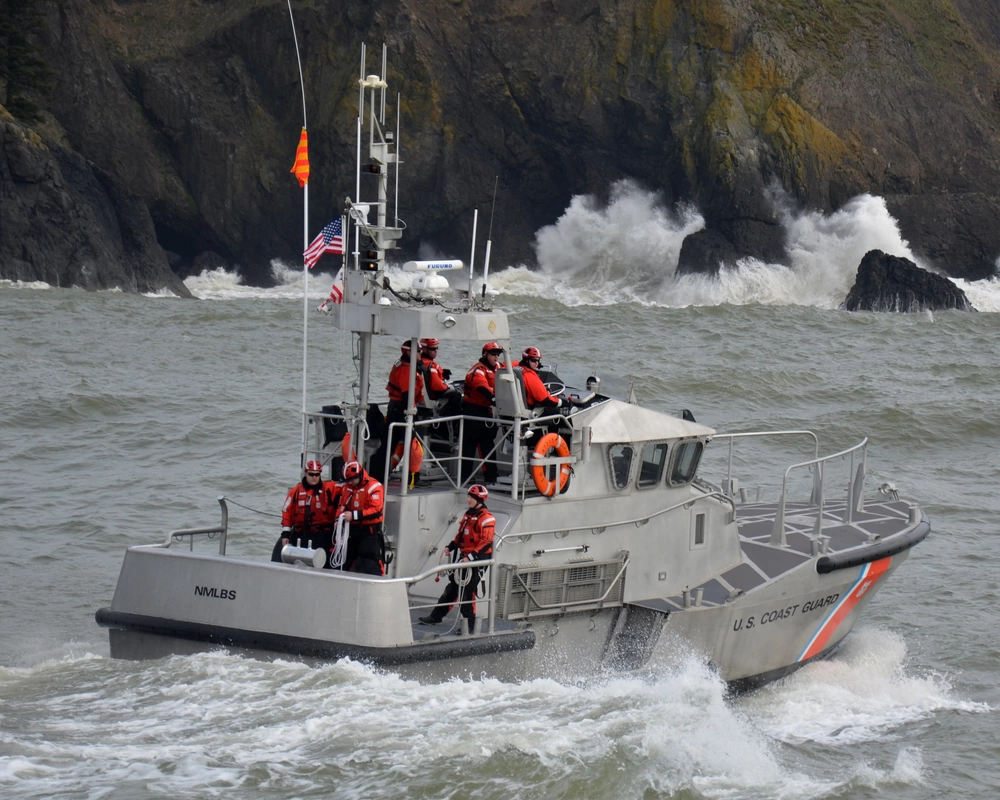
The Surfman qualification traces its roots back to the US Lifesaving Service, originally founded by the Massachusetts Humane Society in 1848 as a way to reduce the number of lives lost as a result of near-to-shore shipwrecks. Over twenty years of both successes and failures passed before a Treasury Department bureaucrat named Sumner Kimball was appointed chief of the Revenue Marine Division and spurred the establishment of a network of lifesaving stations funded by the Federal government.
This network was organized as a distinct agency within the Treasury Department with the official title of US Lifesaving Service in 1878, and in 1915, the “Act to Create the Coast Guard” merged it with the Revenue Cutter Service to form the basis of today’s Coast Guard.
Although Surfmen are required at just 20 Coast Guard boat stations, the extremely challenging training and dangerous working conditions make keeping the billets manned an uphill battle. Exacerbating the problem is the fact that only Boatswain’s Mates are eligible for entry into the Prospective Surfman Program (PSP) the Coast Guard uses to identify and choose those Boatswain’s Mates (BMs) who have a good chance of completing the rigorous training regimen.
The PSP has three training levels: Entry, Intermediate, and Advanced. Striking BMs or BM3s (Boatswain’s Mates Third Class) are only eligible to start their pursuit of the Surfman qualification at the Entry Level; Third and Second Class BMs who have been certified as Motor Lifeboat (MLB) Coxswains enter at the Intermediate Level, while BM2s and BM1s can start at the Advanced Level if they have achieved the MLB Heavy Weather Coxswain certification. To explain how extensive and grueling the Surfman training program is, BMs starting at the Intermediate training level must have at least four years of enlistment training left, and those beginning at the Advanced level need two years left on their contract.
Surfman qualifications can be completed only at a Surf Station or at the National Motor Lifeboat School. Surf Stations are located where surf higher than eight feet takes place on at least ten percent of the days each year; of the 20 Surf Stations, 15 are found on the West Coast. (Composed from The Salute Uniforms)
National Motor Lifeboat School Training at the Surf Stations
Currently, the Coast Guard maintains NMLBS training at the following surf stations:
Barnegat Light, New Jersey
Bodega Bay, California
Cape Disappointment, Washington
Chatham, Massachusetts
Chetco River, Oregon
Coos Bay, Oregon
Depoe Bay, Oregon
Golden Gate, California
Grays Harbor, Washington
Hatteras Inlet, North Carolina
Humboldt Bay, California
Merrimack River, Massachusetts
Morro Bay, California
Oregon Inlet, North Carolina
Quillayute River, Washington
Siuslaw River, Oregon
Tillamook Bay, Oregon
Umpqua River, Oregon
Yaquina Bay, Oregon
Up to 150 students attend courses at the NMLBS every year. In addition to US Coast Guard students, the Canadian Coast Guard, the Royal National Lifeboat Institute, Norway, and other countries have sent students through the course. Of the five classes available, the Heavy Weather Coxswain Course is the “meat and potatoes of the school.”

Fifteen women were serving as Surfmen as of April 2022. “In fact, more women have earned the revered heavy weather boat handling certification in the last five years than in the Coast Guard’s entire lifesaving history. But don’t call these ten expert coxswains’ female surfmen.’ ‘We need to encourage people to stop saying ‘female’ in front of titles where they would not label them male,’ said Lt. Jessica Shafer, Surfman #390 and commanding officer of Coast Guard Station Cape Disappointment in Ilwaco, Washington. ‘While I believe this [qualifier] is often well intended, it highlights difference rather than acknowledges commonality,’ Shafer added.”
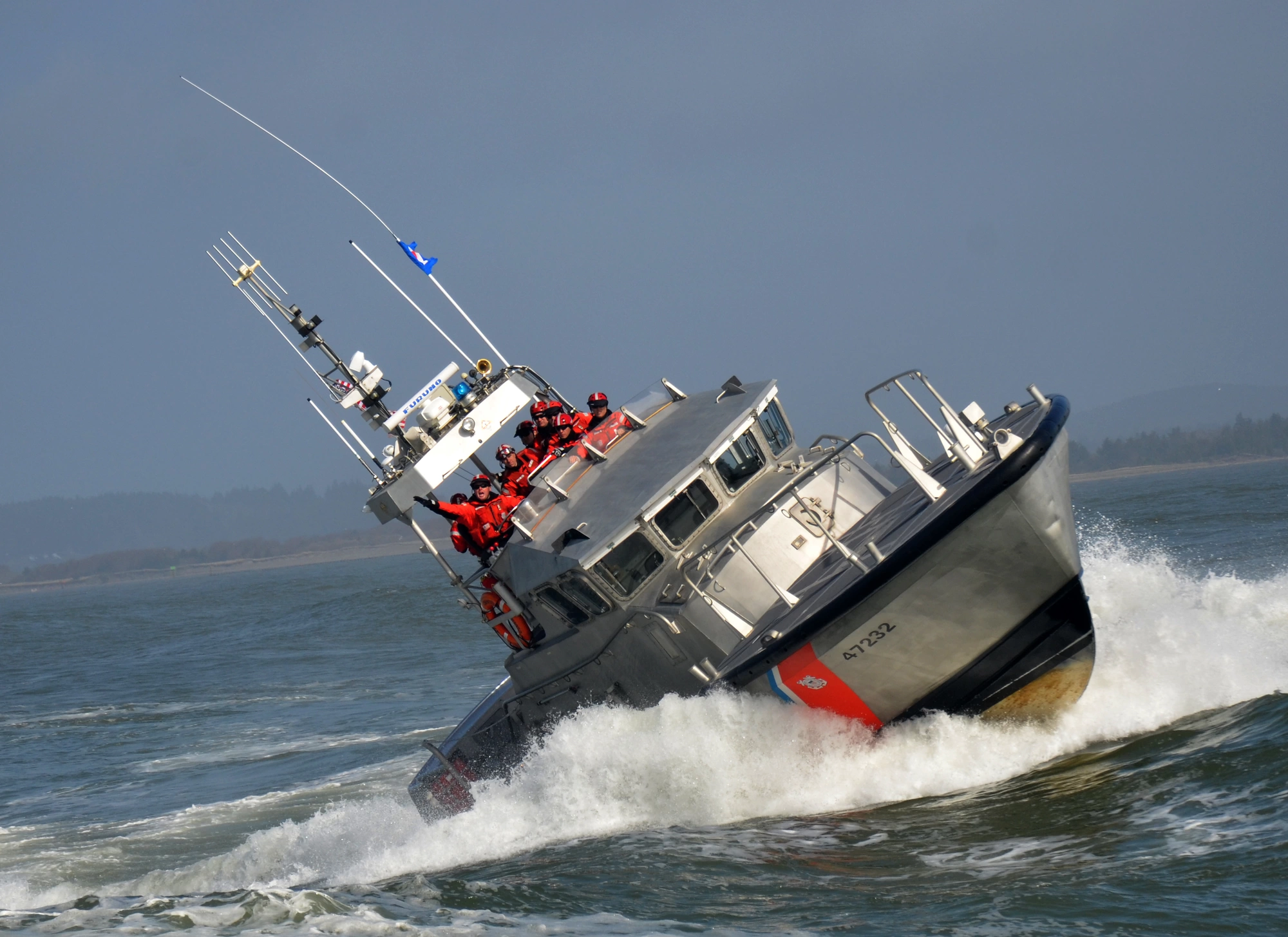
The US Coast Guard operates about 250 coastal and ocean-going cutters, patrol ships, buoy tenders, tugs, and icebreakers, as well as nearly 2,000 small boats and specialized craft. It also maintains an aviation division consisting of more than 200 helicopters and fixed-wing aircraft.
Rows of brass “Surfman Checks,” on display at the Coast Guard’s National Motor Lifeboat School, commemorate all those who have completed the rigorous training required to attain “Surfman” certification for heavy-weather boat operations. These plates memorialize the historical practice of surfmen in the US Lifesaving Service exchanging brass “checks” with their counterparts from adjoining stations to prove the completion of patrols…
Read About Other Famous Military Units
If you enjoyed learning about the National Motor Lifeboat School, we invite you to read about other profiles in courage on our blog. You will also find military book reviews, veterans’ service reflections and more on the TogetherWeServed.com blog. If you are a veteran, find your military buddies, view historic boot camp photos, build a printable military service plaque, and more on TogetherWeServed.com today.
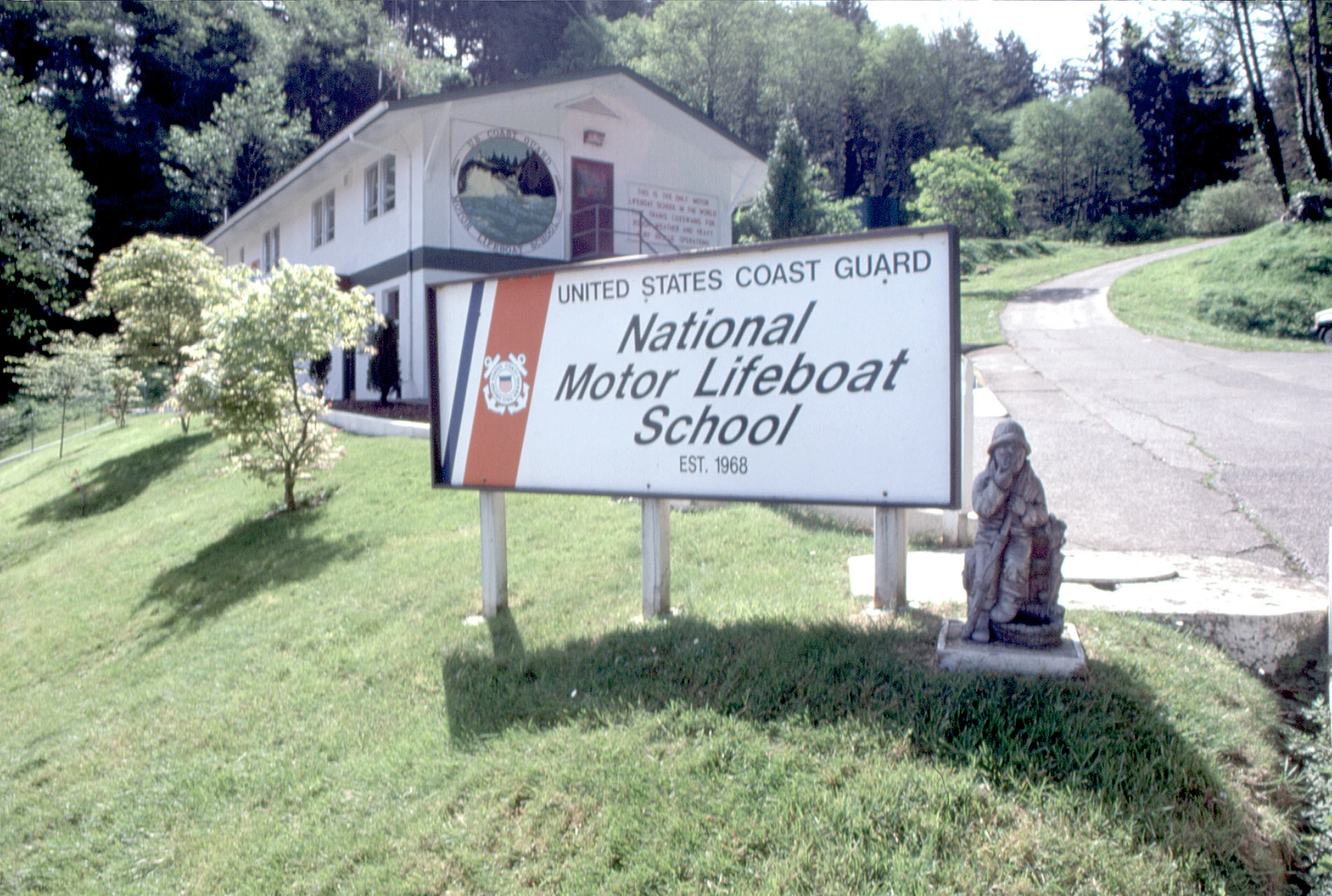
I am a retired Coast Guard Captain who has been involved in numerous open ocean rescues. I would like to visit your training school in late March in order to show my West Point colleague how the best of the best go through the qualifying process. Hopefully the weather will be snotty enough to demonstrate the realities of the hands on training on the bar. A reply will be appreciated.
I attended the Small Boat Training School and received my training certificate for Motor Lifeboat Coxswain on February 18, 1972. My class was the first to receive the crossed oars surfman pin. BMCM Tom McAdams was the lead instructor and later the Petty Officer in charge at Yaquina Bay Station, where I qualified to operate 52312 MLB Victory. Can you provide a list of the men and women who qualified as “Surfmen” or a link to the list?
Thank you, Al
I studied at the school in May 1984. I was a UK RNLI crewman. The first Brit to attend the school. What a top notch place. Brilliant instruction, great camaraderie. The finest lifeboat school anywhere.
Even now after so many years , I remember the school with deepest affection.
” cant never did a damn thing but Try, always did!
All that serve in the USCG lifeboat service have my profound and enduring respect,